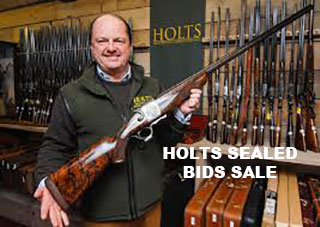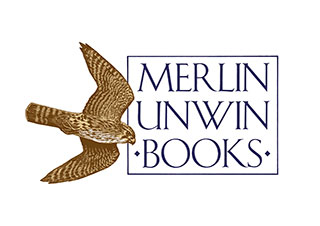If Purdey guns with unusually elaborate and exquisite engraving patterns keep you up at night, then Bonham’s unearthed two examples that should have you sleepless for some time.
November 25th marked one of London’s first gun auctions of significance for some time. With Holt’s and Gavin Gardiner now re-settled in the provinces, only Bonham’s among the traditional ‘big three’ continues to fly the flag in the capital.
Headed by David Williams, with specialists Will Threlfall and Harry Godwin-Austen in the Sporting Guns department, we have come to expect two good sized sales each year. The November catalogue proved worth the wait, with volume and quality, as well as a wide range of lots to suit all tastes; from World War One vintage .303 Lee-Enfields, through a varied collection of modern and obsolete-calibre rook rifles to very modern over & unders by all the usual suspects.
Among the British side-lock and boxlock ejectors, there were pairs by Purdey, Boss, Holland & Holland, Stephen Grant and John Dickson, among others, and single guns by most of the well-known London, Birmingham and provincial makers.
What keen observers like to spot in auctions is the unusual and the rare; the special items outside the ‘bread and butter’ stuff that the trade often seeks out for re-sale. A mint London side-lock is a lovely thing but most makers have a house style and, often, one looks very like another.
One was a Victorian hammer gun, the other hammerless side-lock with a storied past.
Among the interesting pieces on display at Bonham’s was a 16-bore side-lock ejector by John Dickson. Edinburgh gunmaker Dickson is best known for his ‘round action’ trigger plate guns, built to his own patent. His side-locks are not common and 16-bore side-locks less common still. Another unusual gun by a Scottish maker was a ‘highest possible quality’ 12-bore by J.D. Dougall.
These eye-catching guns aside, the really exciting and outstanding shoguns of the sale were, in my opinion, both by Purdey. One was a Victorian hammer gun, the other hammerless side-lock with a storied past.
The first of these was number two of a pair built in 1880, with the number 10624. It is a 12-bore, solid bar, (most Purdey hammer guns from the period are bar-in-wood). The barrels are Damascus and 29 1/2” long, the straight-hand stock is 14 1/2” and the gun weighs 6lbs 10oz, making it a comfortable game gun.
Exterior condition appears high, with a few minor repairs to the woodwork. The barrels are black powder proof, just in proof and measuring a minimum of 21 thou’, which dimensions read to most as acceptable rather than good. But on a rare gun like this, you have to accept some negatives. They are out-weighed by the positives.
In Purdey parlance, this was ordered as a ’chased’ gun and the pair cost £204.13s.0d in 1880. A standard Purdey gun at the time cost around £80, so the extra finish on this added considerably to the cost.
By ‘chased’ Purdey means the engraving is carved in relief with cherubs, angels and scrolls and all this extends to the hammers, guard, lever and other furniture. It is a work of art and far more elaborate and ‘showy’ than the Purdey house style of fine rose and scroll.
With an estimate of £8,000 - £12,000 plus commission, it is an expensive proposition but a rare chance to buy something like this and one that is unlikely to arise again for some time. Buyers of this kind of thing have to strike when the opportunity arises and pay whatever is necessary.
Mr Grifnee is, unfortunately, no longer able to engrave guns but if he were, I doubt the cost of this Purdey today would cover his fee.
The second of these deeply carved and eye-catching Purdeys is a 12-bore self-opening side-lock ejector, engraved by Grifnee & Delcour. It is a distinct oddity.
The gun was made in 1908 and was, presumably engraved with Purdey’s fine rose and scroll, or could have been one of the un-engraved ‘black widow’ guns, delivered with plain, blacked locks and actions. These were often handed to the owner un-engraved when needed for the grouse season, the intention being that the gun would be returned for engraving and hardening later. It seems many never made it back. The delivery date of July 4th, just four weeks from the Glorious Twelfth suggest it may have been so.
Whatever the original case, the gun was back at Purdey’s in 1974 to be re-barrelled. It has also been re-stocked. It appears that at this time it was also submitted to the engravers for a transformation, which they ably delivered. It now sports deep-carved foliage, grotesque creatures and even a cobra on the guard. The work is of a very high standard and totally unlike most Purdeys.
It is estimated to make £15,000-£25,000. Mr Grifnee is, unfortunately, no longer able to engrave guns but if he were, I doubt the cost of this Purdey today would cover his fee.
With a hefty catalogue packed with interesting collectables and some really good British sporting guns, a trip to Knightsbridge in November is definitely worth making time for.
GAVIN GARDINER
Following Bonham’s, Gavin Gardiner has a sale on December 8th in Pulborough, with 308 lots catalogued. As usual, its contents range from Webley & Scott bolt-action .410s for under £100 to single Purdeys in the £20,000 bracket and pairs of Holland & Hollands of a similar value.
Standing out is a super example of an 8-bore hammer gun by Thomas Horsley, expected to make around £17,000 and, what looked like great value to me, a 10-bore ‘Monte Carlo B’ pigeon gun by W&C Scott.
Retaining a great deal of original finish and expected to make just £500, it is a very high quality piece and with a little imagination could be re-purposed as a chamber-sleeved 12-bore, re-proofed with 3” chambers. At 10 lbs it will absorb some punchy cartridges and could be a great high bird or Helice gun.
The run up to Christmas is a busy one for auction goers and the season finishes with Holt’s on 13th & 14th December, which we will explore in more detail next issue.
Published by Vintage Guns Ltd on




